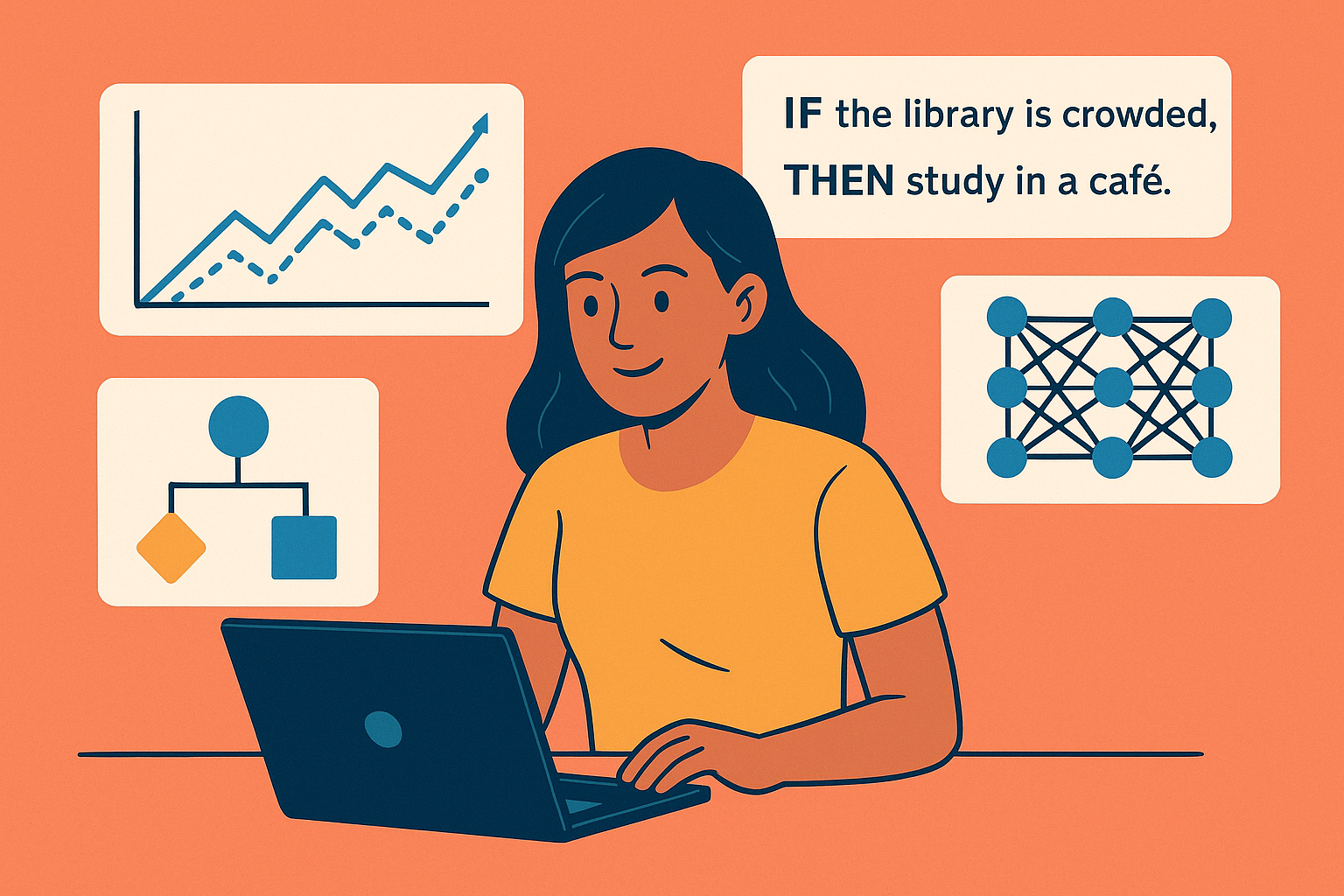
Picture a group project that starts messy. Everyone tries tiny tweaks—renaming a file, switching slides, or fixing one chart. Each fix helps a bit, but soon you’re “stuck” on a version that’s decent, not amazing. To get something truly great, you might need a bigger change—like rebuilding the deck around a sharper story. That’s the basic idea behind how improvement often works in life: we take small steps up a hill, but sometimes we need a jump to reach a higher one. Kauffman and Levin use this simple picture to explain “adaptive walks,” their way of describing how things—organisms, ideas, even study plans—get better over time on a rugged landscape full of peaks and valleys.
According to Kauffman and Levin, imagine every possible version of something as a point in a huge space, and give each point a “fitness” score—how well it works. Moving to a version that’s one small change away is like taking a step to a neighbor on this map. Many maps are bumpy, with lots of little peaks where nearby options are worse, so small-step climbing can end early at a “local optimum.” On totally random (uncorrelated) maps, there are tons of these local peaks, so most improvement paths are short—think a handful of steps before you top out. A greedy strategy that always picks the best neighboring step is even shorter. That’s why quick tweaks often help fast, then stall.
Here’s the twist that matters for everyday life: progress slows as you get better because you have fewer “better neighbors” left. Early on, lots of options beat what you have, so branching out is easy; later, choices shrink and things feel stuck—Kauffman and Levin call this pattern “radiation then stasis.” One fix is to allow bigger leaps—try several changes at once. When the jump is big enough, you can escape the local peak and discover fresh ground. In that “long-jump” mode, they find a simple rule of thumb: the number of improvements grows roughly with the log of the time you keep searching. Translation: early wins come quickly, then the gaps between wins get longer, which feels slow but is normal.
What can you do with this? When your workout, study routine, or side hustle stops improving with tiny tweaks, treat that as a signal. First, accept that short bursts of progress are followed by plateaus, which are built into the rugged nature of maps. Next, plan occasional, safer “jumps”: test a new schedule for a week, learn a different tool, or reorganize roles on your team. Expect that the better you already are, the rarer the easy wins—and that’s okay. Take small steps for steady gains, and reserve bold experiments for breaking out of ruts. That mix—patient climbing plus brilliant jumping—is how you keep finding higher peaks in school, work, and everything in between.
Reference:
Kauffman, S., & Levin, S. (1987). Towards a general theory of adaptive walks on rugged landscapes. Journal of Theoretical Biology, 128(1), 11–45. https://doi.org/10.1016/S0022-5193(87)80029-2
Privacy Notice & Disclaimer:
This blog provides simplified educational science content, created with the assistance of both humans and AI. It may omit technical details, is provided “as is,” and does not collect personal data beyond basic anonymous analytics. For full details, please see our Privacy Notice and Disclaimer. Read About This Blog & Attribution Note for AI-Generated Content to know more about this blog project.



